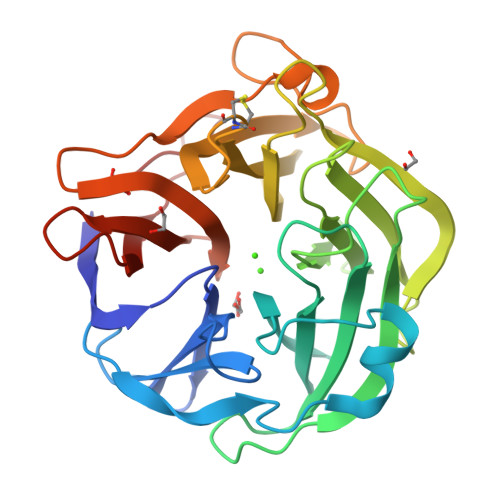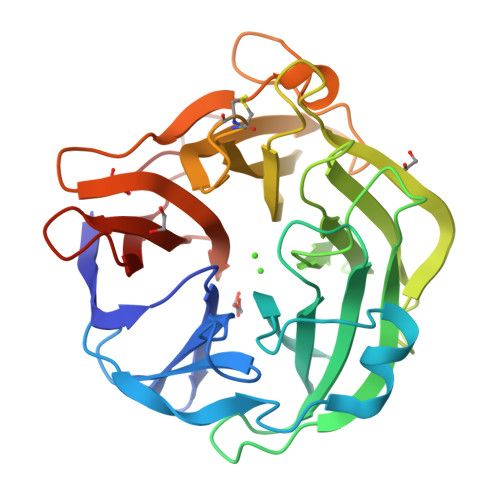Tailored Catalysts for Plant Cell-Wall Degradation: Redesigning the Exo/Endo Preference of Cellvibrio Japonicus Arabinanase 43A
Proctor, M., Taylor, E.J., Nurizzo, D., Turkenburg, J., Lloyd, R., Vardakou, M., Davies, G.J., Gilbert, H.J.(2005) Proc Natl Acad Sci U S A 102: 2697
- PubMed: 15708971
- DOI: https://doi.org/10.1073/pnas.0500051102
- Primary Citation of Related Structures:
1UV4 - PubMed Abstract:
Enzymes acting on polymeric substrates are frequently classified as exo or endo, reflecting their preference for, or ignorance of, polymer chain ends. Most biotechnological applications, especially in the field of polysaccharide degradation, require either endo- or exo-acting hydrolases, or they harness the essential synergy between these two modes of action. Here, we have used genomic data in tandem with structure to modify, radically, the chain-end specificity of the Cellvibrio japonicus exo-arabinanase CjArb43A. The structure of Bacillus subtilis endo-arabinanase 43A (BsArb43A) in harness with chain-end recognition kinetics of CjArb43A directed a rational design approach that led to the conversion of the Cellvibrio enzyme from an exo to an endo mode of action. One of the exo-acting mutants, D35L/Q316A, displays similar activity to WT CjArb43A and the removal of the steric block mediated by the side chains of Gln-316 and Asp-53 at the -3 subsite confers its capacity to attack internal glycoside bonds. This study provides a template for the production of tailored industrial catalysts. The introduction of subtle changes informed by comparative 3D structural and genomic data can lead to fundamental changes in the mode of action of these enzymes.
Organizational Affiliation:
Institute for Cell and Molecular Biosciences, University of Newcastle upon Tyne, Newcastle upon Tyne NE2 4HH, United Kindgom.


















